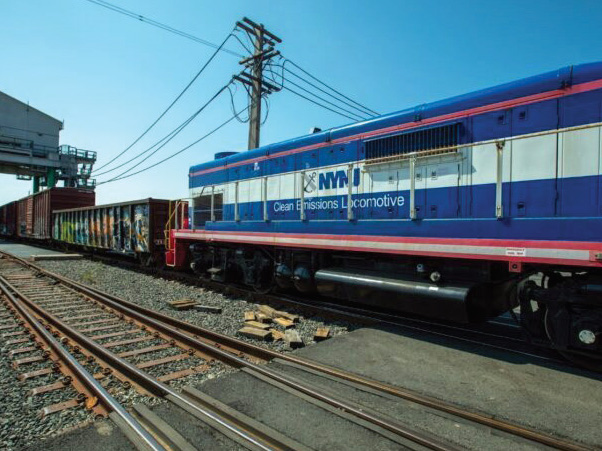New Roadmap also outlines interim goals for 2025 and 2030

As of July 3, trucks with model year 1998 engines or older have been denied access to the Port of New York and New Jersey marine terminals. Also starting July 3, only trucks equipped with a 2014 engine or newer were permitted to register for port access.
Those measures were just the latest in a multi-pronged effort undertaken by the Port Authority of New York and New Jersey to achieve net zero emissions by 2050.
“Truck drivers who’ve never served the port before must now have a 2014 or newer engine on their truck,” explained Mike Bozza, deputy port director at the Port Authority. “We’ve also had a truck replacement program in place for many years.”
Under that program, Class 8 diesel-fueled port drayage trucks with a Gross Vehicle Weight Rating of 33,001 pounds or greater and equipped with a 1998 to 2006 engine are eligible to receive a grant for up to 50% of the purchase price, or a maximum of $25,000 per truck, whichever is less, for up to two replacement trucks with 2014 engines or newer, and the older trucks must be scrapped. The Truck Replacement Program (TRP) is funded by the federal Congestion Mitigation and Air Quality Improvement (CMAQ) Program and the U.S. Environmental Protection Agency’s Diesel Emission Reduction Program (DERA).
To qualify, independent owner operators and licensed motor carriers must have made at least 150 drayage trips to the port’s marine terminals and a minimum of 7,000 miles during each 12-month period for 24 months prior to the replacement. Applicants must also agree to continue to service Port Authority marine terminals with the replacement truck for a minimum of 150 times per year for five years after the date of purchase.
The truck programs, said Bozza, “get us part of the way” to net zero.
The New Roadmap to Net Zero
In September, the Port Authority released a roadmap on how it intends to get to net-zero greenhouse gas emissions by 2050. The roadmap also sets interim goals “to get 35% reductions in emissions by 2025 and 50% by 2030,” said Bozza. “It’s a robust plan, not just for the seaport but for the entire agency.”
Acquisitions and orders now in place will convert 50% of the light duty fleet to electric by 2025. The roadmap accelerated the goal for 100% conversion to 2028. The document reported that ship-to-shore and rail-mounted gantry cranes have already achieved a 98% electric milestone, with 89 of the 91 ship-to-shore and rail-mounted-gantry cranes currently in use at the Port of New York and New Jersey’s marine terminals being fully electric.
“All are targeted to be electric by 2026 through the Port Authority’s Marine Tariff program, incentivizing electric equipment conversion by seaport tenants,” noted the roadmap document.
Other measures at the seaport include phasing in more stringent environmental initiatives to promote use of zero-emission ship fuel, equipment, and trucks at container terminals, supported with charging infrastructure. The Port Authority also committed to increasing the use of rail and barge shipping instead of diesel trucks, including through planned upgrades to the port’s ExpressRail intermodal system and the Port Authority’s wholly owned short line marine railroad, New York New Jersey Rail, and cross-harbor railcar barge.
Clean Vessel Incentive Program
The Port Authority has had a Clean Vessel Incentive ongoing for several years, which provides financial incentives to encourage vessel operators to make engine, fuel, and technology enhancements to reduce emissions beyond the environmental standards set by the International Maritime Organization. The program awards incentives for vessels that reduce their speed to 10 knots or less from 20 nautical miles outside of the territorial sea line, that run engines that meet clean engine standards regulations, and those that use alternative fuels.
“The Port Authority board recently reauthorized that program for an additional five years,” noted Bozza.
The program enjoys a 65% participation rate among vessels calling on the port. K Line was recently recognized for top honors for a second year in a row for its slow steaming efforts, with an 85% compliance rate. Maersk was number two with a 76% compliance rate, while Mitsui O.S.K. Lines performed at the 70% level.
Reducing vessel speeds improves air quality near population centers, the roadmap noted, and also reduces the risk of fatal strikes on whales.
“In 2021,” said Bozza, “the clean vessel program helped remove 850 tons of nitrogen oxides and 62 tons of sulfur oxides from the air.”



_-_28de80_-_58820516bd428ab3fd376933932d068c43db9a4a_lqip.jpg)


